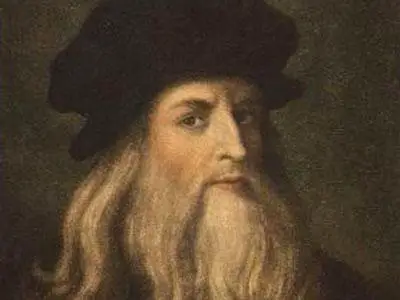Leonardo da Vinci was a genius. The intelligence of Leonardo da Vinci is something that can be argued since he lived in an era where intelligence was not something that could be tested in the way it is today. However, his intelligence still shines through in multiple aspects of his life including his inventions, creativity, artistic abilities, and writing ability.
Leonardo da Vinci intelligence is something that can be seen through his inventions and ability to solve problems. Some argue that Leonardo was a prodigy at a young age when he started showing signs of intelligence through drawing, reading, and writing.
But if Leonardo da Vinci took a modern IQ test while he was alive, how well would he have done? This is not a simple question to answer, as there were no aptitude test of any kind when da Vinci was alive – let alone official IQ tests.
Different measures have placed Leonardo da Vinci’s IQ test score levels between 180 – 220, which place him firmly in the genius category and among the smartest people to ever live.
About IQ Scores
IQ tests are designed so that the average score on the test is 100 and the test will have a standard deviation of 15. For example, if someone has an IQ score of 125, you would say this person has above average intelligence. Scores range from 70 to 130, with these scores meaning below average intelligence and genius levels of intelligence respectively.
One important aspect of IQ test scores is that they are not representative of intelligence. Even if someone scores 130, for instance, this does not mean they are more intelligent than somebody who scored 100. The range of IQ scores does not represent an accurate range in intelligence at all. In fact, IQ range among individuals tends to be very low compared with the range in general intelligence. All of this goes to show that Leonardo da Vinci’s IQ score estimate would be completely off the charts and place him well into the 99.9 percentile.
The use of IQ tests is controversial. Opponents of the practice, such as the National Institute on Disability and Rehabilitation Research (NIDRR) often cite that IQ tests can be biased against cultural minorities or low-scoring individuals.
IQ scores are often depicted as being changeable throughout development, but it is important to note that these scores are based on comparison with others in the same age group. So a person who takes the test at age 21 can reliably score the same at age 61.
The Life of Leonardo da Vinci
Leonardo da Vinci was a true Renaissance man – a brilliant artist, scientist, engineer and inventor. He has been hailed as the embodiment of the “universal genius” or “Renaissance man.”
Leonardo da Vinci was born April 15th 1452 in Anchiano which is now part of modern day Italy. He was born out of wedlock to Messer Piero Fruosino di Antonio, a notary and landlord, and Caterina, a peasant girl. It is believed that his mother’s uncle was Francesco de’ Serragli , who may have provided Leonardo with early support and encouragement in his artistic endeavors.
His father married four times and had six children, of which only Leonardo and his half-brother Francesco survived childhood.
Leonardo had a gift for art from a young age, and was initially trained in the workshop of Verrocchio, where he met Andrea del Verrocchio , another very talented pupil at the time. Da Vinci trained in a number of areas during his lifetime, especially including the arts. He studied art, architecture, anatomy and human nature itself. Several of his works were painted using ” sfumato ” which is an oil based paint that diffuses sharp edges. In this way it gives paintings a more natural feel to them rather than just crisp clear lines. His pieces often involved scientific studies of the world around him, which led to his interest in painting and sculpting anatomically correct figures. He did however manage to complete several paintings including “The Last Supper” in 1498, “Lady with an Ermine” in 1489, “St. Jerome” in 1481 and “The Virgin of the Rocks” in 1483.
He often took interests into areas that bordered on science and mathematics, such as anatomy and astronomy. This lead to his studying the human body, which he used for many of his artistic works. For instance, Leonardo da Vinci would dissect humans to understand how they worked, as well as to understand how his works would look anatomically correct. This interest in art and science, led him to make several discoveries about the human body. He was the first to correctly describe how the spinal cord connected to the brain , its function and pain transmission, and he also discovered that all bones connected through suture joints (where bone is held together by fibrous tissue).
Leonardo da Vinci died in 1519 at the age of 67 in Cloux, France. He lived a long and fruitful life filled with much knowledge and many great works of art.
Image credit:
Alison restrepo quiroga, CC BY-SA 3.0, via Wikimedia Commons
